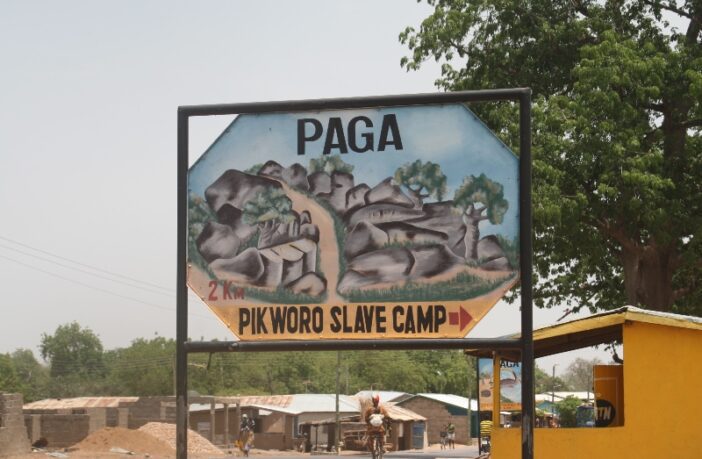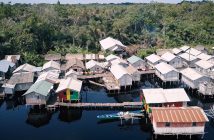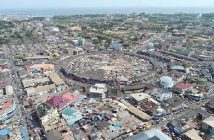Paga popularly known for its sacred crocodile ponds, is a small town in the Upper East Region, with a population of about 10,000. However, the entire population of Paga including its outskirts – is over 100,000.
Most of the inhabitants are farmers of the Kassena ethnic group, whose settlements and ties stretch over the colonial borders of Ghana into what is now Burkina Faso. The idea of different nationalities mean nothing to these people due to their shared ancestry and ethnicity before what is the recent concept of nationality or religion. Many Kassenas in this small town Paga are multilingual, speaking their native Kasem and English among other languages.
According to legend, Paga was founded c. 1400 by a young man named Naveh, who was saved by a crocodile while on a hunting expedition. He then left his village and settled in the place which is now Paga.
The founder of the town, Naveh, when searching for a comfortable place to settle, exclaimed ‘Ayipaga’ which means ‘My eye is fixed on this land’. The place came to be called by that name, which in due course was shortened to ‘Paga’.
It is in the west of this town that the Pikworo slave trade occurred in. Amidst all the unity among these people, slave trade infiltrated the land, when the French, English and Dutch introduced the trans- Atlantic slave sale. The Pikworo Slave camp was founded in 1704 originally developed as a slave transit center where slaves were auctioned and later resold in the Salaga Slave market.
The Pikworo Slave Camp in Paga, served as a holding place for slaves brought down from the north until they were forced to continue their trek 150 km south to the slave market at Salaga and then on to the coast for shipment. History has it that Slaves who tried to escape were placed naked on that rock in the sun without food or water as punishment.
Serving as a slave collection outpost by Ghanaian traders who sold slaves to the French, the English, and the Dutch, an average of 200 slaves were made available at Pikworo at any given time. These slaves would be housed until it was time to transport them to the Southern Coast for Trans-Atlantic sale. The journey could take two to three months on foot with no footwear, with slaves being almost naked while traveling through different weather conditions while the slave masters rode on horses.
The Pikworo slave camp itself leaves little evidence of its history at first glance but guided by a knowledgeable eye, the past can become more clear. ‘There are glimpses of wide open field views, but look anywhere and your view is sure to be impeded by a rock formation, or a boulder that looks as though it has paused mid-tumble. Atop a cluster of boulders, there is a gash in one of the largest stones where the slave masters used to draw water. Around it, there is a kind of field of manmade scoops in the rock. These scoops are bowls cut out by slaves who tried to escape and were chased down.’
Visitors are faced with the historic sights of the slave traders watch “tower”, the mass grave cemetery and, eating bowls Man made scoops in rocks served as eating plates or bowls for slaves at the camp. The larger the size of the scoop the higher the number of slaves to eat from the scoop.
A gash in a large rock at the camp served as a source of water for cooking. The site features the trees where the slaves we shackled, where they ate from bowls dug into the rocks, and where they were entertained by drumming on what sounded like hollow rocks. It also features the slave cemetery and punishment rock.
REFERENCES
1. Available online at, https://visitghana.com/attractions/pikworo-slave-camp/
2. Available online at, https://en.m.wikipedia.org/wiki/Pikworo_Slave_camp#:~:text=It%20is%20located%20in%20Paga,to%20the%20coast%20for%20shipment.
3. Available online at, https://en.m.wikipedia.org/wiki/Paga





